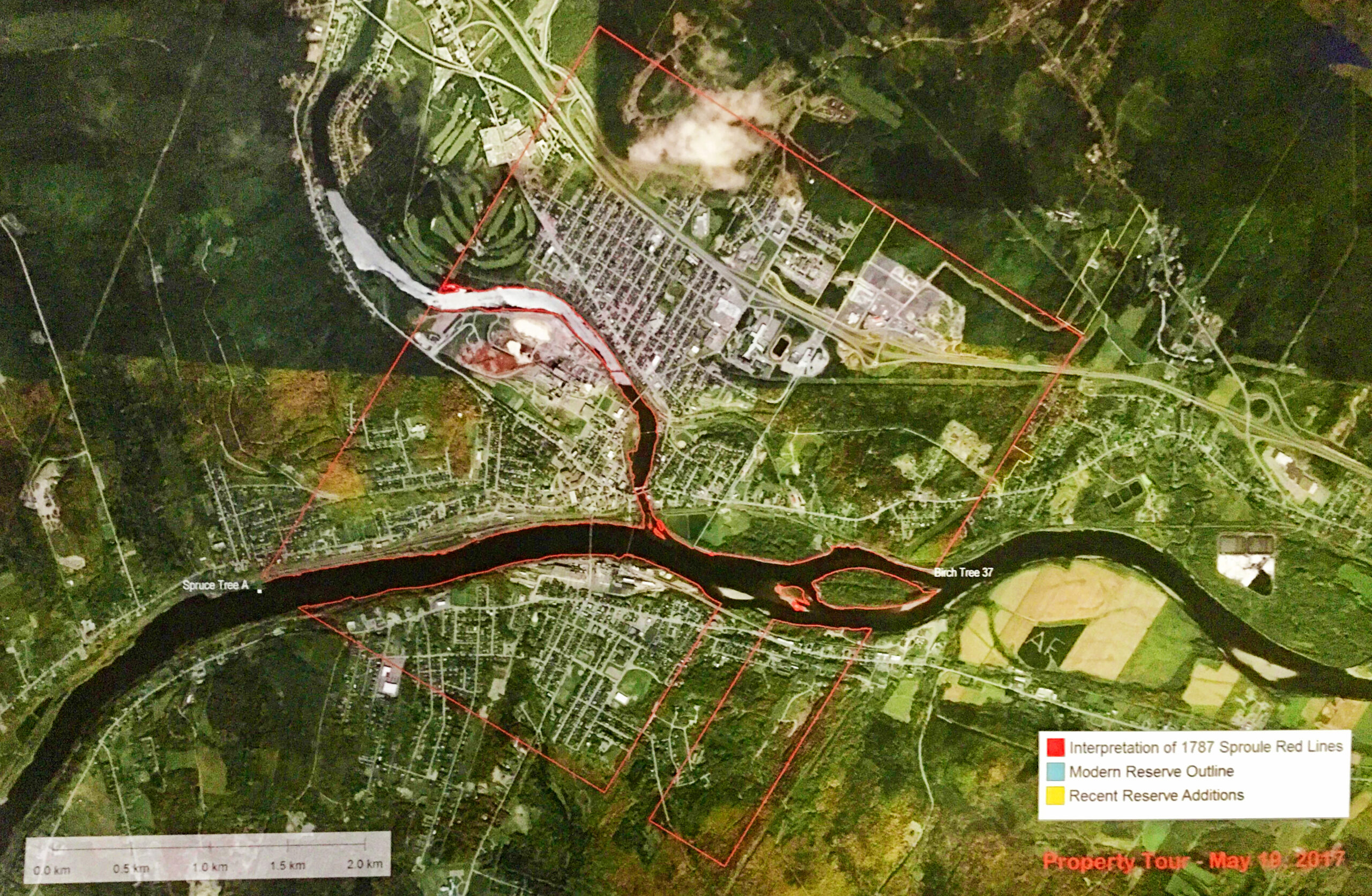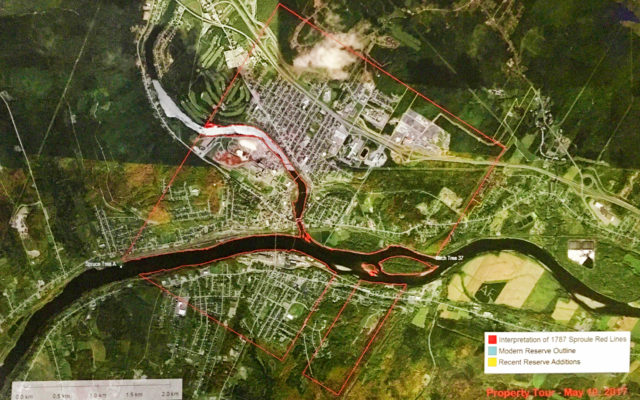
EDMUNDSTON, New Brunswick — A federally recognized tribunal in Canada ruled Tuesday that a large part of downtown Edmundston, New Brunswick, is on tribal lands of the Madawaska Maliseet First Nation.
The ruling does not mean that the land will have to be returned to the tribe or that the city will have to buy it back, but the Specific Claims Tribunal could require the federal government to pay the Maliseet nation up to $150 million in compensation, according to a joint press release from the city and Maliseet First Nation.
While the Canadian federal government cannot appeal the decision, it has 30 days to ask for a judicial review, according to the release.
“It was a victory,” said Maliseet Chief Patricia Bernard. “We’re quite happy with the decision that validates our claim.”
The tribe, which has about 550 members with about half living on reservation land near Edmundston, has been working on the land claim for more than 20 years, according to Bernard.
The reserve measures around 700 acres now, but in their claim before the independent Specific Claims Tribunal, Madawaska Maliseet First Nation representatives stated that the original size when it was created in 1787 was about 3,900 acres. Those original boundaries encompass much of what is today the center of Edmundston, and even parts of Madawaska, Maine, across the border. The case does not involve any of the land across the St. John River in Madawaska.
“Specific claims generally refers to monetary damage claims made by a First Nation against Canada regarding the administration of land and other First Nation assets,“ said Bernard, a third generation chief of the tribe. “This is an issue between MMFN and the Government of Canada.”
A compensation phase follows the ruling. The Specific Claims Tribunal has no authority to transfer lands but does have the authority to award an amount up to $150 million as compensation, according to the joint release.
In the release, Edmundston Mayor Cyrille Simard congratulated the tribe “for this important victory,” adding that the ruling would not change the relationship between the neighboring communities.
“We signed a Friendship Agreement in 2014 and we work together on a number of issues and projects,” the mayor said. “We can only be happy for our friends and partners since this will help repair some of the harm done in the past.”
Speaking by telephone on Thursday, Bernard said she and her community have not yet begun looking at how they might spend any monetary award.
Less than a decade ago, the tribe won $5.7 million in another case before the tribunal.
The Madawaska Maliseet used some of that 2008 tribunal settlement to invest in the Grey Rock Entertainment Center, which is now a popular casino and event destination on the reservation that attracts visitors from both sides of the border.
That settlement involved land in nearby St. Basile originally used by the Canadian Pacific Railway and later by Fraser Papers, which built a pipeline to carry liquid effluent from the pulp mill in Edmundston to a treatment facility.
The Maliseet continue to have an agreement with the now Twin Rivers Paper Co. for use of the land for the pipeline.
Bernard said the first nation is likely to continue using new claim money to invest in economic development projects of various kinds. Other projects may address housing, healthcare and education needs, she said.
While research for this claim started in 1996, the hearings were only held this summer, following changes made in 2011 to the government’s claims processing procedures.
The tribal claim is based in large part on documents created by George Sproule, who was the surveyor general of New Brunswick in the late 1780s and early 1790s.
According to the Specific Claims Tribunal’s website, the tribunal was established in October 2008 as part of a joint initiative between the federal government of Canada and the Assembly of First Nations, which represents about 900,000 tribal members across Canada. The independent adjudicative body consists of up to 6 full time federal judges appointed from Provincial Superior Courts across the country.
- A federally recognized tribunal in Canada ruled on Nov. 29 that a large part of downtown Edmundston, New Brunswick, is on tribal lands of the Madawaska Maliseet First Nation. This map shows Edmundston north of the St. John River and parts of Madawaska, Maine, to the south. The red lines indicate the 1787 boundaries of the tribal reservation as created by George Sproule, who was the surveyor general of New Brunswick in the late 1780s and early 1790s. (Courtesy of City of Edmundston)








